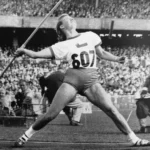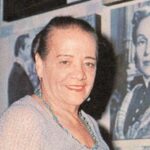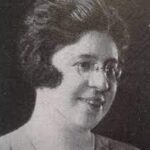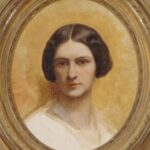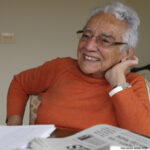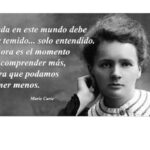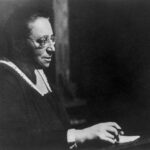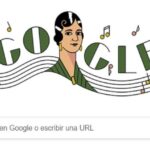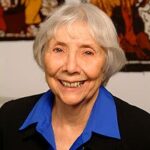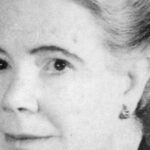 En Berlín hay una serie de ordenanzas para nombrar a las calles, que incluye que las calles y plazas lleven nombre de mujeres hasta que sea igual el número con las de nombre de hombres. Este artículo describe el proceso para nombrar la plaza fuera del Museo Judío de Berlín. BERLIN — When city authorities asked the Jewish Museum here to propose a name for the cobblestone square outside its new education center, museum officials promptly suggested Moses Mendelssohn.
En Berlín hay una serie de ordenanzas para nombrar a las calles, que incluye que las calles y plazas lleven nombre de mujeres hasta que sea igual el número con las de nombre de hombres. Este artículo describe el proceso para nombrar la plaza fuera del Museo Judío de Berlín. BERLIN — When city authorities asked the Jewish Museum here to propose a name for the cobblestone square outside its new education center, museum officials promptly suggested Moses Mendelssohn.
Mendelssohn, an 18th-century philosopher whose theories heralded the Jewish enlightenment, reflected the museum’s mission of tolerance and understanding, and his name would resonate internationally, museum officials said.
He also met the criterion of having no other streets or public places in the city named after him.
No one on the district board responsible for naming streets disputed that such an honor was long overdue for a man once refused entry to Berlin through a main city gate because he was Jewish.
Nevertheless, the suggestion was rejected because Moses Mendelssohn was not a woman.
An edict passed by the Kreuzberg district, where the museum is, requires that streets and public places be named for women until parity is reached with men, part of a longstanding debate over official efforts to undo entrenched gender roles in German society.
Just a week before the district council voted on naming the city square, German lawmakers rejected legislation that would have required the country’s largest companies to ensure that women make up at least 20 percent of their corporate boards by 2018, an approach that followed months of argument over how to increase the presence of women in the highest levels of management.
In recent years, politicians and civil rights activists in Berlin have decided to seek change, quite literally, at the street level. Of the 375 named streets in Kreuzberg, only 12 bear women’s names. And three of those came after the local edict was passed in 2005.
“It goes without saying that women have been neglected, even if they were published authors, or successful artists, or otherwise equally deserving as the men whose names grace our city’s streets,” said Kristine Jaath, the head of the Kreuzberg district assembly and a member of the Green Party, which drew up the idea of striving for gender parity on signposts.
Politicians in German cities like Munich, Mainz and Hamburg have also sought to make women more visible through their street names, which overwhelmingly honor great men in German history, including rulers like Maximilian II of Bavaria and Kaiser Friedrich of Prussia; the father of the printing press, Johannes Gutenberg; and religious figures like Martin Luther.
Beethoven Street or Mozart Lane are also commonly found in villages from the Rhineland to the Alps. The composer Felix Mendelssohn-Bartholdy, grandson of the philosopher Moses Mendelssohn, earned the honor of a Berlin street named after him in the 19th century. His sister Fanny Hensel, also a composer, had to wait until 1991.
As banal as it may seem, advocates say, the predominance of male names on city streets hampers the recognition of women in all levels of society, from politics to classrooms to boardrooms.
“Many elements of public life are very influenced by this male-orientated point of view,” said Christine Neher, an activist at the Bureau for Women’s Issues in Mainz.
Her office initiated the drive to increase women’s names on Berlin’s streets in the mid-1990s, after discovering that they accounted for only 2.4 percent of its more than 1,500 streets, squares and public places.
“It does not have to be aggressive, but it is another attempt to counter the very compartmentalized way of thinking that is already very pronounced in German society,” Ms. Neher said.
Complicating the debate, however, is the still-cordoned-off square outside the Berlin Jewish Museum’s new academy, a squat industrial building graced with an angular and dynamic entrance designed by Daniel Libeskind, the architect of the main museum. In this case, two groups that had faced discrimination were suddenly being pitted against each other in a way that left many uncomfortable.
Over the course of an intense tug of war that stretched over 18 months, suggestions for suitable women’s names poured in from employees of the museum and from local citizens, who named authors, suffragists, teachers and poets, all Jewish women who they felt were worthy of the honor.
But the Jewish Museum stuck by its original suggestion. Other supporters gathered several hundred signatures in the hope of forcing an exception, as had happened with the naming of two other streets in the district after victims of political violence.
In the end, a compromise was found by including the wife of Moses Mendelssohn, Fromet, in the name for the square.
Fromet-and-Moses Mendelssohn Platz received unanimous approval by the district council in a final vote last week.
Fittingly, one of the museum’s most important pieces is a Torah curtain that dates to 1774 or 1775 and is believed to have been made from the delicately embroidered silk veil of Fromet’s wedding dress.
The museum welcomed the compromise as “justifiable,” but made clear its preference for the original name.
“Fromet Guggenheim’s marriage to Moses Mendelssohn can certainly be considered modern,” said Cilly Kugelmann, the director of the Jewish Museum. “She was more than ‘just’ the wife of an important man, and as such it is no blemish to a street sign, even if this compromise is not devoid of a certain ridiculousness.”

